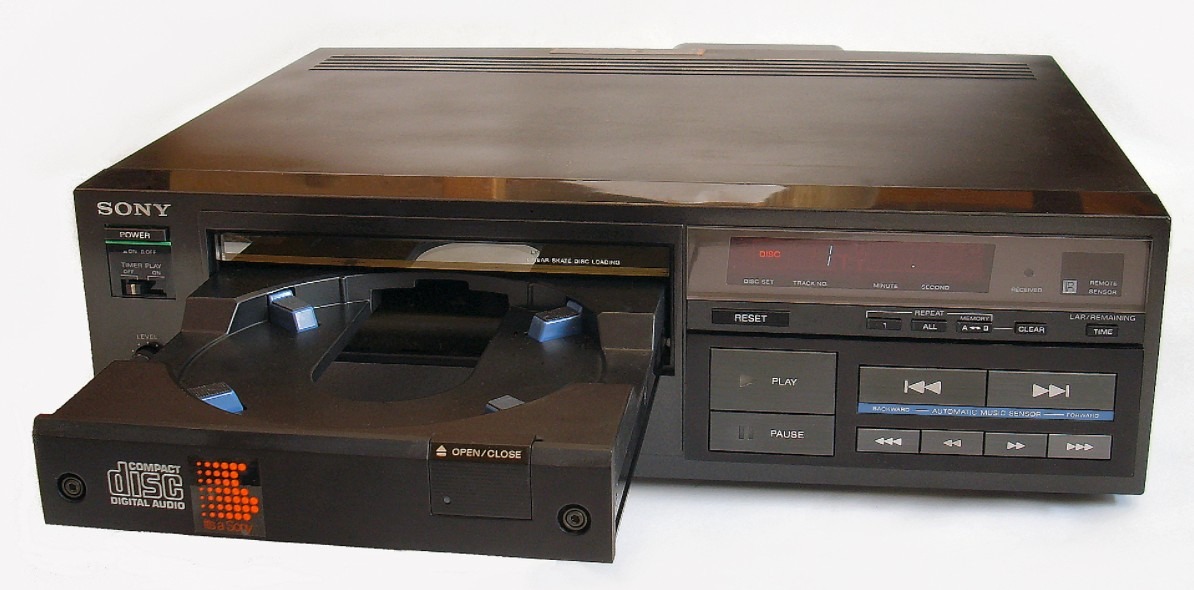How do you listen to the latest songs or your favorite music? Chances are you’re hearing them via iTunes, Spotify, or Youtube and playing them on your smartphone, Bluetooth speakers, or wireless earbuds. Nearly four decades, things were far more different. In 1982, the first compact disc player was released and became a staple in many homes. In this article, let’s look back at the birth and fall of perhaps one of the greatest innovations and musical devices ever made – the CD player.
History of the Compact Disc
Delving into the history of the CD Player won’t be possible without discussing the origins of the compact disc (CD) first. It started in the early 1970s, as the world saw significant and rapid developments in laser optics, LSI (large-scale integration technologies), and digital electronics. Various companies began looking at the chances of veering from analog means and shift to storing audio in an optical form in digital formats. Two prominent frontrunners were the companies Philips and Sony, which then worked independently to create various prototypes.
In 1978, Philips launched the Compact Disc Project to finally end the era of cassette tapes and analog video equipment. The company was already ahead of its competitors in terms of disc design after releasing the first laserdisc player in December of the same year, which used optical discs to store analog video signals for home video viewing.
Though Philips has the knowledge in creating the physical CD, they didn’t have enough expertise to further advance in digital audio recording. On the contrary, Sony has successfully explored digital audio technology and circuitry but lacked the technical know-how in creating an actual CD.
With the appropriate solution on opposite ends, Philips and Sony shocked the world when they decided to develop and design the compact disc system. Both companies worked with each other, with Philips engineers focusing on the disc’s physical aspects and readability while Sony’s specialist spent time converting analog to digital formats and creating the circuit design.
The collaboration proved to be fruitful as the companies were able to create the first digital compact system. In 1980, they released the Red Book or the Compact Disc standard, which listed standard regulations on the disc size, sampling, and recording details. Some of the standard sets were never altered and remained as is until today.
A year later, numerous manufacturers entered a consortium to follow the standards set in the Red Book. With the successful creation of a standard compact disc (CD), the two companies began working again independently, but this time, to produce their own compact disc drive equipment.
The Birth of the CD Player
On October 1, 1982, Sony released the CDP-101, the world’s first commercial CD audio player, in Japan. A month later, Philips launched the CD100 in Europe. Soon, these CD players were introduced worldwide in March 1983.
The arrival of the CD players sparked the advent of a digital audio revolution, providing consumers with a crystal-clear and high-quality music experience, far from what they have been listening to in vinyl records and cassette tapes.
CDs were initially manufactured only by Sony and Philips but came with a hefty cost. Manufacturing CDs then were incredibly tedious and required personnel assigned to wear masks during the process. As more factories emerged, the prices of CDs became more affordable.
Meanwhile, CD players were also costly, costing up to $1,000 in the United States, which lasted about seven months after its initial release. As the price eventually started to go down, more people were able to afford to purchase CD players, catapulting the device into extreme popularity and making it an integral part of many households. Between 1983 to 1984, about 400,000 CD players were estimated to be sold in the United States alone.
The first CDs launched included records from classical artists like Schubert, Mozart, and
Tchaikovsky, and modern musicians like the Journey, Pink Floyd, Billy Joel, ABBA. It wasn’t long enough when a thousand more titles were released from different genres, such as classical, rock, pop, jazz, to karaoke.
Sony defeated Philips again in 1984 after releasing Sony D-5/D-50, the world’s first portable CD player. The popularity of the CD players carried on in 1988, finally overtaking vinyl records and eclipsing the cassette tapes in 1991. By 2007, over 200 billion CDs had sold worldwide.
The fall of the CD players started with the introduction of better and more flexible technologies. In 2001, iTunes was launched, allowing listeners to individual tracks rather than paying the price for the entire CD album. Music is also now available in digital formats, playable on computers, smartphones, or online, eliminating the need for physical CDs and signaling the end of CD players. Nevertheless, the era of CD players is worth remembering, as it’s still a period that brought millions of people from different generations a new way of listening to music.
